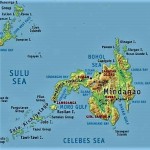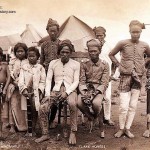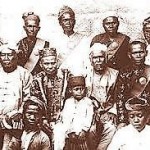The more pronounced cultural differences of those belonging to the Sulu Sultanate at once may be explained by the people’s geographical habitation, including their general lifestyles.
The Tausugs, Samals, Yakans, and the Jama Mapuns, in particular, tend to be a sea-oriented, socially and economically. Livelihood among these people has been principally based on a ‘current, shore and market place’ existence.
Outside of the Mindanao mainland, Filipino Muslims concentrate in the southern parts of Palawan, the Cagayan de Sulu Island, and the entire Sulu archipelago. The latter comprises around 500 islands extending from the western tip of Mindanao to the northwest coast of Sabah in East Malaysia.
The Tausugs are found in Jolo and Siasi Islands while the Samals are settled mainly in Tawi-Tawi Province and the northern Sulu which embraces Tawi-Tawi, Pangutaran, Sibuto, Simunul, and Balangungui Islands and some parts of Jolo.
The Yakans are settled in Basilan Island while the Jama Papuns (who are Samals) live mostly in Cagayan de Sulu Island and partly in the southwestern part of Palawan. The Badjaos (they are not different from Samals) can be found in ‘sea villages’ located mostly in Tawi-Tawi and Sibutu Islands and isolated sections of the islands of Siasi and Jolo and Zamboanga.
Archaeological, linguistic and folkloric studies point out that, prior to the coming of Islam, Mindanao and Sulu had already established trade relations with Indonesia and Indo-China as early as the 13th century. Authorities on Muslim culture, however, differ on the observation as to what particular group founded the early settlement of the region.
Before the end of the 14th century, the Samals were believed to have begun migrating from Johore in great numbers with many of them settling in the Sulu Archipelago.
But the influx of the Samal settlers in the predominantly Tausug enclave appeared not to have supplanted at all the traditional Tausug culture which had developed into quite a superior degree over that of the Samals. Closely related to the Samals are the Badjaos, the Yakans, and the Jama Mapuns.
The Badjaos are seafaring people living throughout the Sulu archipelago between Zamboanga and Northeast Borneo. They are also called Samal Laut or Samal delaut. It is claimed that Badjaos descended from the first Samal group who migrated to the archipelago. Unlike other migratory groups in the Philippines, the Badjaos never had permanent settlements like those of the Tausugs and the Samals.
The Yakans who are found mainly in Basilan Island are people of culturally marked divergences compared with other Filipino Muslims groups. The coming of the Yakans is said to have followed the migratory drive of the rest of the pre-Islamic inhabitants of the area. They have, however, assimilated some Tausugs or Samal influences.
Considered the latest ethnic group which migrated to the region are the Jama Mapuns. They belong to the Samal group and are sedentary. They are found in Cagayan de Sulu Island and thinly scattered in Southern Palawan and North Borneo. The Jama Mapuns are sometimes called Samal Cagayan. Although they have some customs similar to the Tausugs, they nonetheless, have essentially remained Samal in culture.
Archaeological findings in the southeast and in Cagayan de Sulu Island indicated that, during the 9th and 11th centuries, the place was already an important trade centre, a crossroad of the commercial activities between the archipelagos and its neighbouring areas.
From ‘The Ethnic Ensemble’ by Renato Perdon, ‘Haylaya, Celebration After Spiritual Renewal’, Presidential Commission for the Rehabilitation and Development of Southern Philippines, Metro Manila, 1980













Leave a Reply